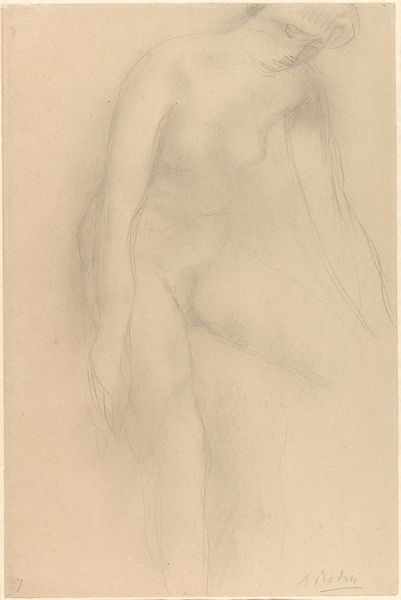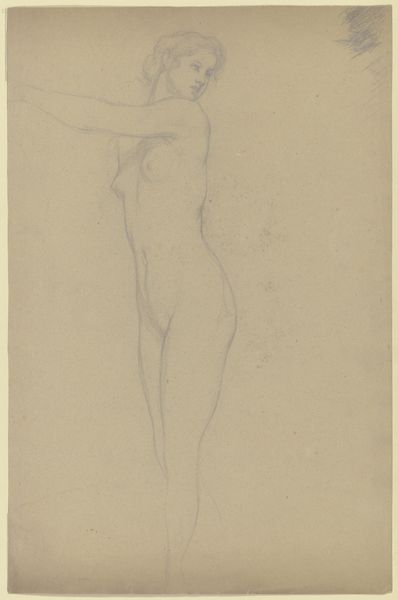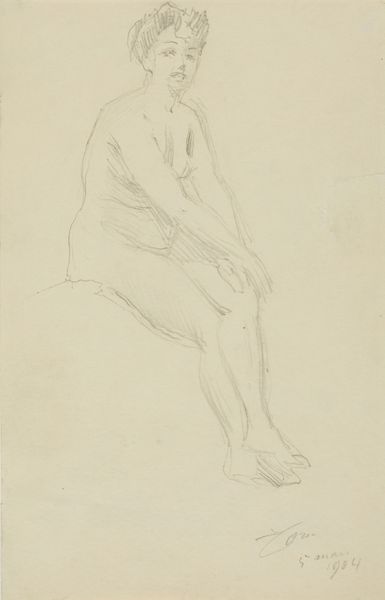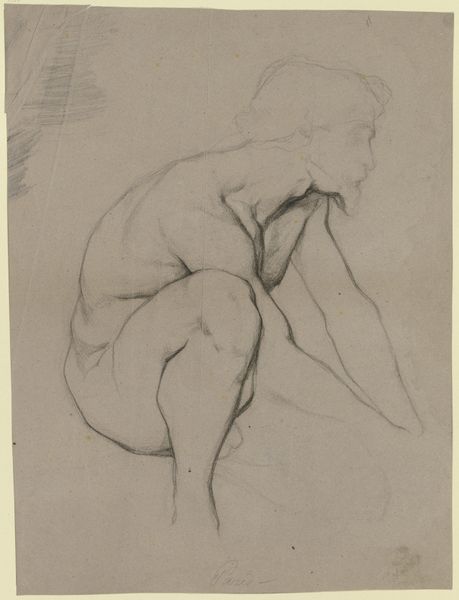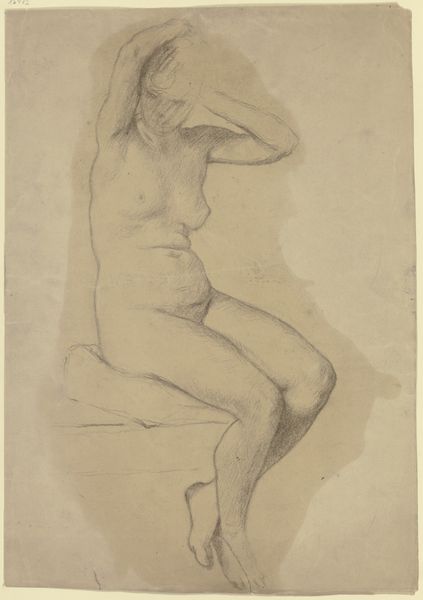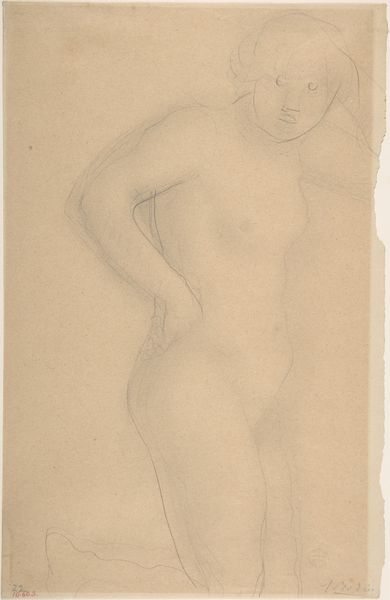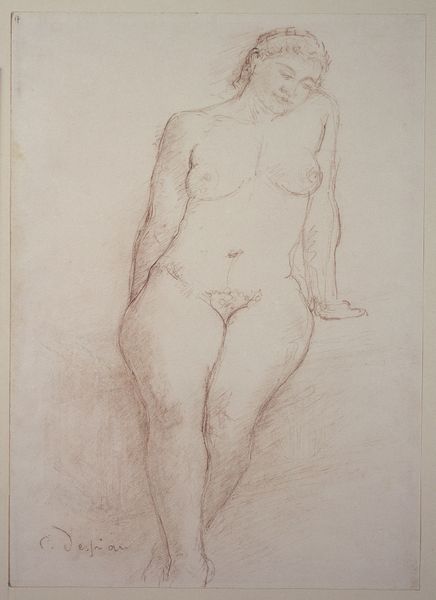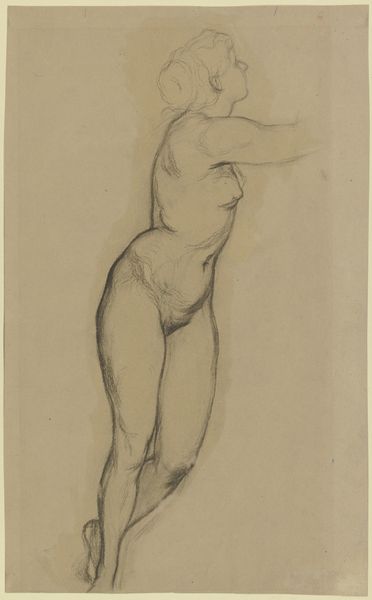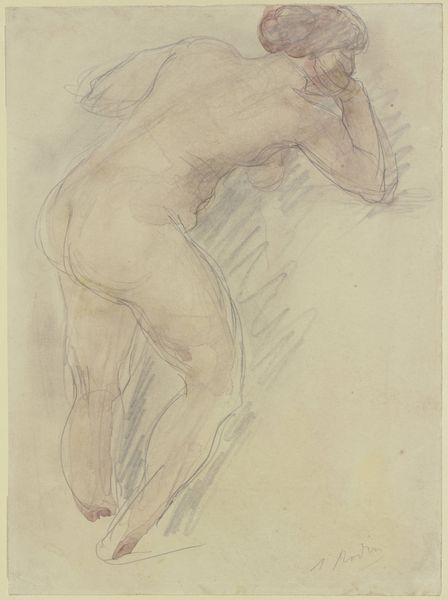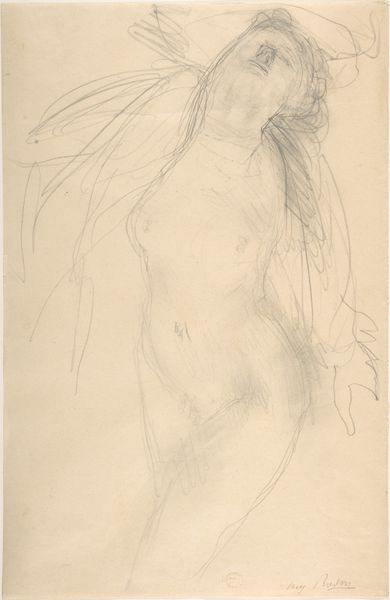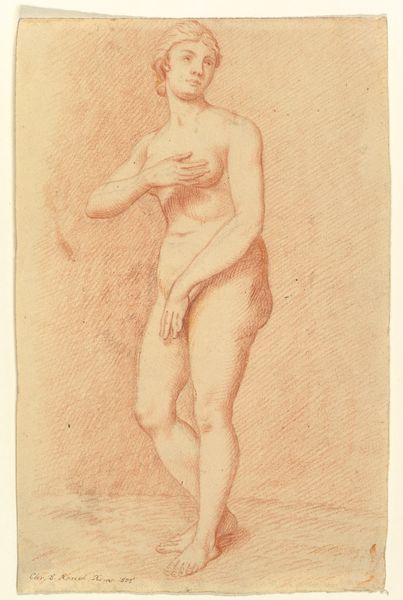
drawing, pencil
#
portrait
#
drawing
#
figuration
#
pencil drawing
#
pencil
#
nude
Dimensions: Overall: 31.2 x 20 cm (12 5/16 x 7 7/8 in.) support: 33.7 x 25.2 cm (13 1/4 x 9 15/16 in.)
Copyright: National Gallery of Art: CC0 1.0
Curator: The piece before us is a pencil drawing titled "Seated Female Nude," attributed to Auguste Rodin. What are your initial thoughts? Editor: My immediate impression is one of delicacy and vulnerability. The figure appears unfinished, almost ephemeral, as if she might fade from the page at any moment. Curator: Indeed. The sketch-like quality is paramount. Notice how Rodin utilizes a network of finely drawn lines to suggest form and volume rather than define them rigidly. There is a real economy of line here. Editor: It is as if Rodin invites us to participate in the act of creation, to complete the image in our minds. This speaks to the changing status of the nude in late 19th-century art. It moves beyond mere representation to a space of encounter and perhaps even empathy, wouldn't you say? Curator: Certainly, it reflects the shifting social attitudes toward the body and the representation thereof, which were quite revolutionary at the time. How do you read the pose itself? The woman's posture. Editor: The seated position, with her limbs loosely arranged, gives her a casual demeanor but still a striking and defiant visual stance, in my opinion. There is no idealization of the nude here, unlike those painted in the Academic Style back in the time. The model possesses both strength and fragility, and in its own time, I’d bet she caused a scandal of her own. It certainly caused quite a ruckus to those in power. Curator: It caused a definite ruckus; art challenging institutions of power are always controversial. Focusing on purely visual aspects for a moment, notice the emphasis on capturing the interplay of light and shadow. He's using subtle tonal variations with his pencil to define the figure's contours. There is a kind of soft illumination to the figure in total contrast with Academic rigid figures you spoke of just a moment ago. Editor: Ultimately, this piece feels deeply personal, as if we’ve stumbled upon a private moment between artist and model and maybe something more: A dialogue about our understanding of ourselves. Curator: An astute observation. It allows us to see how formal choices enhance meaning in the drawing. The art offers a space to think about what art means for different viewers. Editor: For me, this brief interaction underscores art’s historical value—it is much more than line work but also acts as an emblem of social change and a place of contemplation for current debate.
Comments
No comments
Be the first to comment and join the conversation on the ultimate creative platform.
